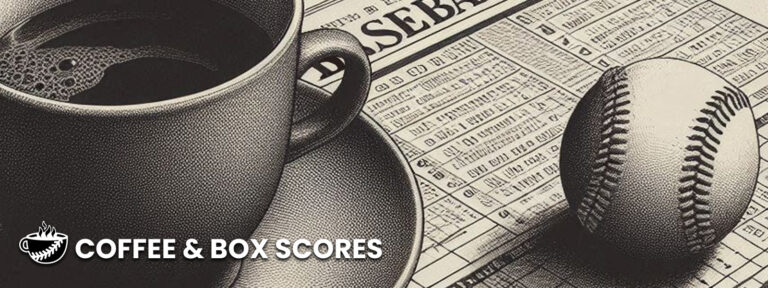The results of the 2025 Hall of Fame vote will be announced on Tuesday, January 21. After doing individual profiles of 20 of the potential electees, Connections reveals its own choices.
As a follower of the dialogues and revelations of Hall of Fame balloting choices, I’ve long felt that voters who publicize their annual selections should preface their choices with a statement of viewpoint: think of it as a voter’s version of Crash Davis’ “I Believe” speech from Bull Durham. If I feel others should offer this declaration, it’s only fair that I, in my make-believe ballot, do the same.
The numbers need to astound – that’s the simplest premise and the most basic qualification. They might reflect a significant peak, they might tell a story of steady accumulation, they might enchant the imagination through league leadership, they can be culled from the traditional categories or the more modern, contextualized means of evaluation. There’s no exact formula for assessment; rather, there’s an emotional equation that burbles from the numerical consideration, where the stats coalesce into a belief that a ballplayer fits within Cooperstown’s plaque room. Inside that hallowed space, the numbers leap and swirl, they captivate. If a nominee’s statistical résumé does that for (and to) me, then he belongs.
For those who might be unfamiliar with the BBWAA voting parameters, this is a crucial rule involved in the decision-making: “an elector will vote for no more than ten (10) eligible candidates deemed worthy of election. Write-in votes are not permitted.”
The names on the 2025 ballot are:
Bobby Abreu
Carlos Beltrán
Mark Buehrle
Carlos González
Curtis Granderson
Félix Hernández
Torii Hunter
Adam Jones
Andruw Jones
lan Kinsler
Russell Martin
Brian McCann
Dustin Pedroia
Andy Pettitte
Hanley Ramírez
Manny Ramírez
Fernando Rodney
Álex Rodríguez
Francisco Rodríguez
Jimmy Rollins
CC Sabathia
Ichiro Suzuki
Troy Tulowitzki
Chase Utley
Omar Vizquel
Billy Wagner
David Wright
Ben Zobrist
My selections are (all links take you to the longer Connections profiles):
Bobby Abreu: Remarkably durable and consistent, Abreu displayed a terrific combo of power, patience and baserunning acumen, run scoring and run production. He’s one of 34 players ever to reach 1,300 runs, 1,300 RBI and 1,300 walks. His 60.2 bWAR is 15th among right fielders (min. 51% of games in right), right behind Andre Dawson (64.9) and Dave Winfield (64.2) and right above Ichiro Suzuki (60.0) and Vladimir Guerrero (59.5).
Carlos Beltrán: One of the most prolific switch-hitters ever, one of the more well-rounded players of his generation, one of the supreme postseason performers the game has witnessed. His 70.1 bWAR is eighth among center fielders, between Joe DiMaggio’s 79.1 and Kenny Lofton’s 68.4.
Andruw Jones: Perhaps he didn’t fulfill his enormous expectations, but at his heights, he was a magnet in center, both as a collector of would-be hits and as an attraction for us lucky enough to be watching. Couple that with rare pop for the position, and you’ve got an all-timer. Baseball Reference identifies 54 players ever to amass at least 20.0 dWAR (defensive WAR); Jones is one of three from that group to also produce at least 400 homers, along with Cal Ripken, Jr. and Adrian Beltré.
Manny Ramírez: A genius with the bat, with counting and rate stats to hold up against some of the very best right-handed hitters ever. Among all players with at least 1,000 games in either of the corner outfield positions, his offensive WAR (oWAR) is the eighth highest, behind marks from Babe Ruth, Barry Bonds, Henry Aaron, Ted Williams, Frank Robinson, Mel Ott and Rickey Henderson.
Álex Rodríguez: One of the most prolific and accomplished ballplayers ever, it’s hard to find a meaningful category where he doesn’t rub shoulders with the immortals. 12th all-time among position players in bWAR (between Ted Williams and Lou Gehrig), he owns the fourth highest mark among players in the integration era (behind Barry Bonds, Willie Mays and Hank Aaron).
CC Sabathia: One of the winningest lefties ever (13th all-time), one of three southpaws to reach 3,000 strikeouts, a stretch of being one of the true aces across the game. On the pitching side, the first quarter of the 21st century is headed by a few names, Sabathia’s among them.
Ichiro Suzuki: Somehow, he amassed 3,089 hits in MLB. Somehow, that’s only part of his extraordinary numerical and narrative résumé. All-time, only Pete Rose produced more hits from an age-27 season and on.
Chase Utley: For a 10-year stretch, he was one of the very best players in the game, although this was seemingly ignored by MVP voters. At his best, a do-it-all presence whose contributions and tools place him among the most valuable second basemen ever: among those with at least 67% of their games at second, his bWAR comes in between Hall of Famers Craig Biggio and Billy Herman.
Billy Wagner: It’s still startling to see his dominance, even in this current era when dominant closers are in evidence everywhere. In the role, Wagner was about as untouchable as anyone has ever been and he did it long enough to amass the eighth most saves ever.
Thanks to Baseball Reference and its extraordinary research database, Stathead, for help in assembling this piece.

Roger Schlueter
As Sr. Editorial Director for Major League Baseball Productions from 2004-2015, Roger served as a hub for hundreds of hours of films, series, documentaries and features: as researcher, fact-checker, script doctor, and developer of ideas. The years at MLB Production gave him the ideal platform to pursue what galvanized him the most – the idea that so much of what takes place on the field during the MLB regular and postseason (and is forever beautifully condensed into a box score) has connections to what has come before. Unearthing and celebrating these webs allows baseball to thrive, for the present can come alive and also reignite the past.


